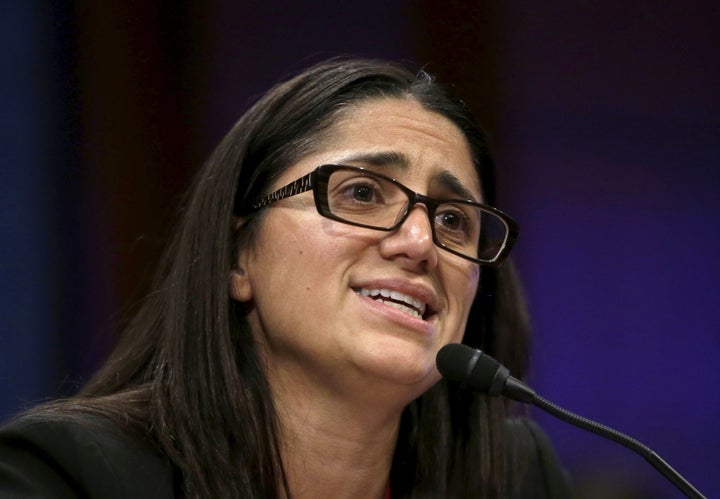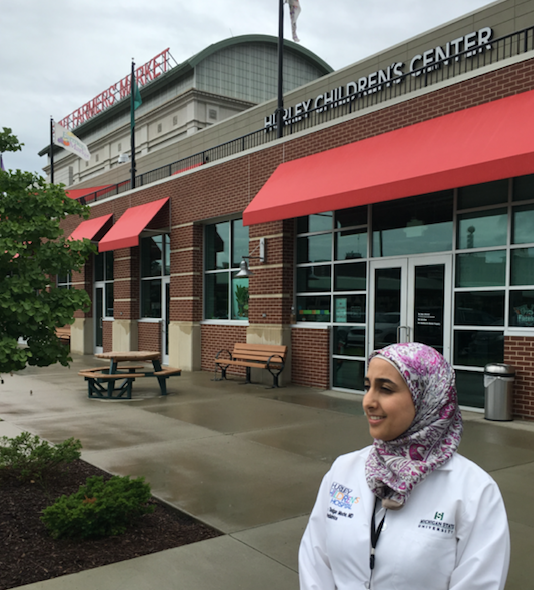FLINT, Michigan ― Republicans eager to justify the severe Medicaid cuts in their Obamacare repeal proposals have offered up a number of arguments. They say Medicaid doesn’t contribute to better health, or that it doesn’t offer value to its beneficiaries. They also say the proposed cuts would affect only able-bodied adults, sparing groups like low-income children that Medicaid has traditionally served.
Those claims don’t hold up well to scrutiny. Relative to people with no health coverage, Medicaid recipients end up more financially secure and have better access to care, according to a body of research that stretches back decades. And while the evidence of Medicaid’s health effects is more ambiguous, most well-respected experts believe it helps and, in the aggregate, may even save thousands of lives a year.
But for a more poignant demonstration of why repeal advocates are wrong about Medicaid, it helps to see the impact Medicaid can have on a community ― the different ways it supports vulnerable groups, especially children, and just how much those groups would suffer if Republican legislation were to pass.
One of those communities is Flint.
Most people know about the contamination of the city’s drinking water, which attracted national attention in the late summer and early fall of 2015. Few people know about the role Medicaid played in exposing it.
Residents began complaining about foul-looking and tasting drinking water shortly after state officials, who had taken charge of the city’s finances, decided to take water directly from the Flint River rather than from Lake Huron. But even after an outside researcher at Virginia Tech found evidence that the river water lacked critical anti-corrosive additives to prevent lead from leaching from the pipes, officials continued to insist the water was safe to drink.

That’s when Dr. Mona Hanna-Attisha, a pediatrician and public health researcher at the city’s Hurley Medical Center, started pulling blood testing data from the hospital’s electronic medical records. Those records showed that the number of children with above-average lead levels had risen by more than 100 percent since Flint switched its water source, with particularly high increases in certain zip codes.
The data existed because of Medicaid ― specifically, because of the program’s Early and Periodic Screening, Diagnostic and Treatment, or EPSDT initiative, which requires and finances extra medical testing for low-income children. Congress added EPSDT to Medicaid in the late 1960s, shortly after the program’s creation, because both Head Start programs and Vietnam draft boards were reporting high incidences of health problems that had gone undetected and untreated.
Lead, a toxin that causes severe, irreversible damage to the developing brains of young children, is precisely the sort of hazard EPSDT was designed to detect. Hanna-Attisha’s research drew national attention to the crisis, and after briefly attempting to deny her findings, state officials finally admitted she was right.
“Without that data,” Hanna-Attisha told HuffPost recently, “I have no idea where we would be.”
Today, Flint is back to drawing its water from Lake Huron, and the lead levels in the water supply are down, if not yet to where they should be. But Medicaid continues to play a critical role in the well-being of Flint’s children.
That’s partly because Medicaid is doing for Flint what it did for New Yorkers following the Sept. 11, 2001 attacks, and for Gulf Coast residents after Hurricane Katrina in 2005 ― serving as an emergency source of health coverage for anybody in need of help.
Thanks to a special waiver that state officials sought and federal officials approved after the crisis became public, Michigan’s version of Medicaid is now open to all Flint-area children and pregnant women in households with incomes up to four times the poverty line.
“Without that [Medicaid] data, I don't know where we would be.”
- Dr. Mona Hanna-Attisha, on the blood test results that showed high levels of lead in Flint's children
The same waiver also allows Michigan’s Medicaid program to offer special case management services ― “Medicaid on steroids,” as Hanna-Attisha calls it ― providing counselors who can coordinate the mental and physical health services that kids and pregnant women who ingested lead-tainted water might need.
The waiver has added approximately 15,000 more people to the Medicaid rolls in Flint, on top of the 30,000 who were already part of the program. A substantial number of those 30,000 people qualified for the program because Michigan opted to join the Affordable Care Act’s Medicaid expansion, taking advantage of extra federal matching funds to extend its Medicaid program to households making below or just above the poverty line. For a family of four, the annual income cutoff is $32,718.
Michigan’s decision to expand Medicaid helps explain why the number of people without insurance in and around Flint has fallen to roughly half of what it was in 2010.
But coverage numbers alone don’t fully capture what the expansion has meant for low-income communities, because all that money from Washington has a secondary effect. It boosts the finances of clinics and hospitals, allowing them to expand capacity ― which can mean hiring staff to see more people, providing more services, or both.
That’s exactly what’s happened in Flint, where Hurley, the city’s only academic medical center and safety-net hospital, opened a new downtown clinic for children last year. The Hurley Children’s Center provides a lot more than basic medical care. Parents can get everything from breastfeeding training to counseling on how to handle difficult children. Kids leave their appointments with free books, which they pick out from the shelves, and $10 vouchers they can spend on fresh produce at the Flint Farmer’s Market next door.
These “food prescriptions” are part of a major initiative to improve nutrition. Whether they will actually make a difference remains an open question. Hurley staff members are studying the results in real time to see whether the children develop better eating habits and, more importantly, better health.
But the program is a reminder of the vast opportunities clinics like Hurley’s have to influence the behavior of children at a young age, forming better lifetime habits, if they have the resources to do so. And although private philanthropy provides significant support for these efforts, it can’t do the job alone.
“What we do for children impacts their life trajectory ― and that would be impossible without Medicaid,” Hanna-Attisha said.

Now, that sort of progress is in jeopardy. The Better Care Reconciliation Act, the bill Senate Republican leaders hope to bring to a vote this month, in its current form would cut off the extra federal matching funds that states like Michigan used to expand eligibility. The Senate bill would also also change the way the federal government calculates its Medicaid payments to the states, by tying future payments to inflation.
That new formula would almost certainly create a gap between the funding states need to maintain their current level of coverage and the funding they would get from Washington. Overall, the Republican bill would reduce federal spending on Medicaid by $772 billion over the next decade, according to the Congressional Budget Office.
Under pressure to close the funding shortfall once the expansion money goes away, and then under added pressure as the program’s new spending formula kicks in, states would almost certainly seek to reduce the scope of their Medicaid programs. They would likely do this through some combination of reducing payments to providers, limiting eligibility for the program, or narrowing the scope of services that Medicaid covers.
That is bound to have an impact on safety net providers, because they rely heavily on Medicaid to finance their operations. One estimate by experts at the Commonwealth Fund determined that Medicaid cuts in the House version of Republicans’ health care legislation would reduce net income for safety net hospitals by 83 percent in 2026. And the cuts in the House bill would actually be smaller than what the Senate bill proposes.
At Hurley, nearly half the patients are on Medicaid and many of the rest have no coverage at all, which means significant changes in revenue from the program would be difficult for administrators to handle.
“As an organization, we would have to review and potentially streamline existing programs and facilities, across our landscape,” Cass Wisniewski, Hurley’s chief financial officer, told HuffPost. “These reductions would curtail any positive growth and progress that we have accomplished over the last four years.”
Medicaid, like all large programs, has real problems that need attention. And although the program is more thrifty than either Medicare or private insurance, in the sense that it pays less for equivalent services, it is taking up an ever-larger share of the federal budget.
The expansion itself isn’t a net drain on federal finances, because the Affordable Care Act raised taxes and cut spending elsewhere to offset the cost. Over time, however, allowing Medicaid to keep doing what it’s doing ― for the children of Flint and for kids around the country more generally ― would require some combination of enacting new taxes and spending cuts, accepting higher deficits, and (ideally) finding ways to control the underlying cost of health care that makes it so expensive for everybody.
None of those changes would be easy to make, and to many conservatives, they would be ill-advised ― in part because, as the argument goes, all of those extra taxes end up depressing the economy in ways that ultimately hurt poor people more than health insurance helps them.
But it’s hardly clear that Medicaid actually has negative economic effects, particularly since providing health care can also have positive economic effects ― especially in the long run and especially for children. Spending a little money up front to gather data that ultimately helps prevent lead poisoning in kids, for example, yields clear financial returns in the future. The kids will grow up with fewer mental and physical problems that require treatment and be able to earn a lot more money as working adults.
Not that such an investment needs to pay off financially. Although the architects of Medicaid hoped it would yield economic benefits, their primary goal was a moral one: “to give every child the chance to fulfill his promise,” as President Lyndon Johnson put it.
Fifty years later, staff members talk about Hurley’s mission in similar terms ― as a place that does more than simply treat disease, or even promote good health.
“This is their place, a place where they can see hope,” Dr. Zain Alamarat, the chief pediatric resident, said of the kids she sees. “We can plant the seed ― ‘Somebody listens to me, somebody cares about me.’ And if you can plant that seed in kids, then you can change a generation.”

